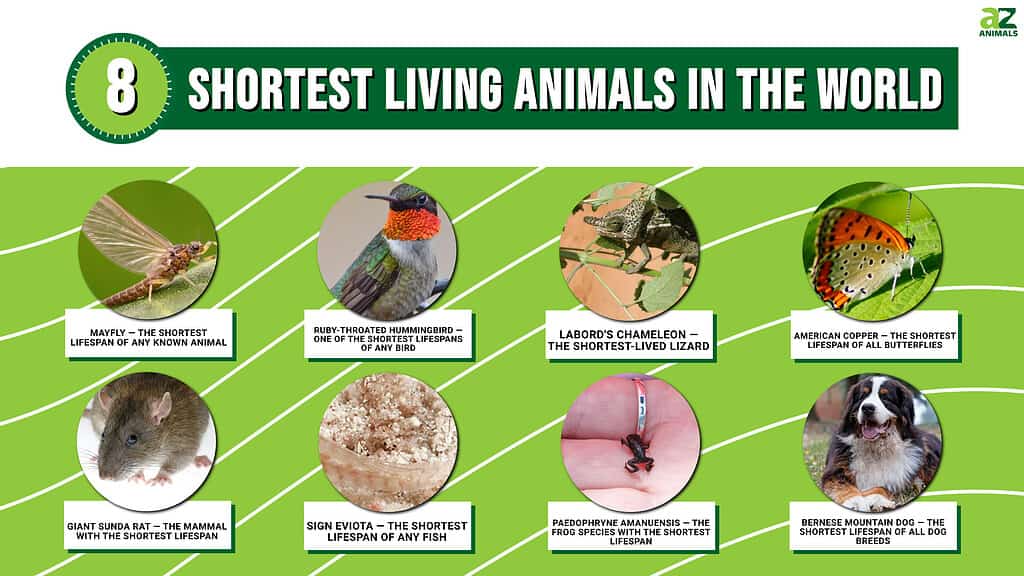
The process of natural selection favors species with longevity, but it can be dangerous to assume that an individually long lifespan is a reflection of a species’ long-term feasibility. The Greenland shark is recognized as one of the longest-living animals on Earth, but its lifespan of up to 500 years is reflected in the fact that these creatures don’t even reach sexual maturity until they’re a century and a half old.
For many, the window of opportunity for breeding is much, much smaller — but a shorter life can be an evolutionary adaptation in its own right.
Rather than simply list the animals with the shortest lifespans in order, we’ve picked short-lived species that reflect the full breadth of the animal kingdom.
Here’s your list of the shortest living animals on Earth along with some context about how they manage to complete their life cycle and pass on their DNA to the next generation:
#8: Bernese Mountain Dog — The Shortest Lifespan of All Dog Breeds
Expected Lifespan: 5.7 years

©iStock.com/Kriste Sorokaite
It’s been long acknowledged that larger dog breeds tend to die younger than smaller dog breeds, but it’s only been recently that we’ve begun to grasp how much of that has to do with biological factors and how much it has to do with outside factors like big dogs being more likely to be housed outside or more likely to get hit by cars. But a study in the journal Current Biology seems to indicate that large dog breeds age more quickly than their smaller counterparts.
But the hundred pounds Bernese mountain dog’s lifespan is significantly less than the average of eight years for comparably large dog breeds. This can be attributed to this dog breed’s unfortunately high risk of cancer known as neoplasia. Hopefully, our understanding of this causal factor can help us breed happier and healthier members of the breed.
#7:Paedophryne Amanuensis — The Frog Species With the Shortest Lifespan
Expected Lifespan: One year

©alex_gor/Shutterstock.com
While individual breeds and members of a species tend to live longer the smaller they are, the larger species tend to live longer than smaller ones. That helps explain the extraordinarily short lifespan of the Paedophryne amanuensis — a frog from Papua New Guinea that also happens to be the smallest vertebrate in the world. With a length of less than a third of an inch, they make juicy prey for centipedes and scorpions. That exceedingly small size made their discovery incredibly difficult, and we’re still learning about these miniature frogs as a result. What we do know is that they’re one of only about a dozen frog species in the world that give birth to live young rather than tadpoles. It’s a process that could help boost their intergenerational survival.
#6: Sign Eviota — The Shortest Lifespan of Any Fish
Expected Lifespan: 59 days
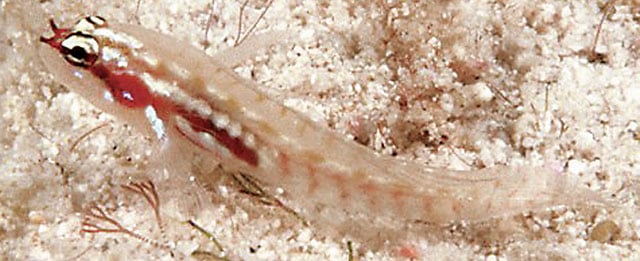
the sign eviota lives for only two weeks and spends the first half of its life in larval form.
©Randall, J.E. / CC BY 3.0 – License
The coral reef plays host to roughly a quarter of the planet’s marine life, and that includes the fish with the shortest lifespan yet discovered. Found in Australia’s Great Barrier Reef, the sign eviota lives for only two weeks and spends the first half of its life in larval form. Also known as pygmy gobies, it’s believed that they developed this shortened life span as a way to survive in an environment with exceedingly high levels of natural predators.
These fish experience a mortality rate as high as eight percent a day, so an incredibly rapid reproduction cycle is one of the methods they’ve developed for long-term viability. During this time, a female of this fish species will lay three clutches of eggs that constitute over 400 eggs. Through raw numbers and rapid turnaround, the pygmy goby has found its niche in a highly competitive environment.
#5: Giant Sunda Rat — The Mammal With the Shortest Lifespan
Expected Lifespan: six months to a year
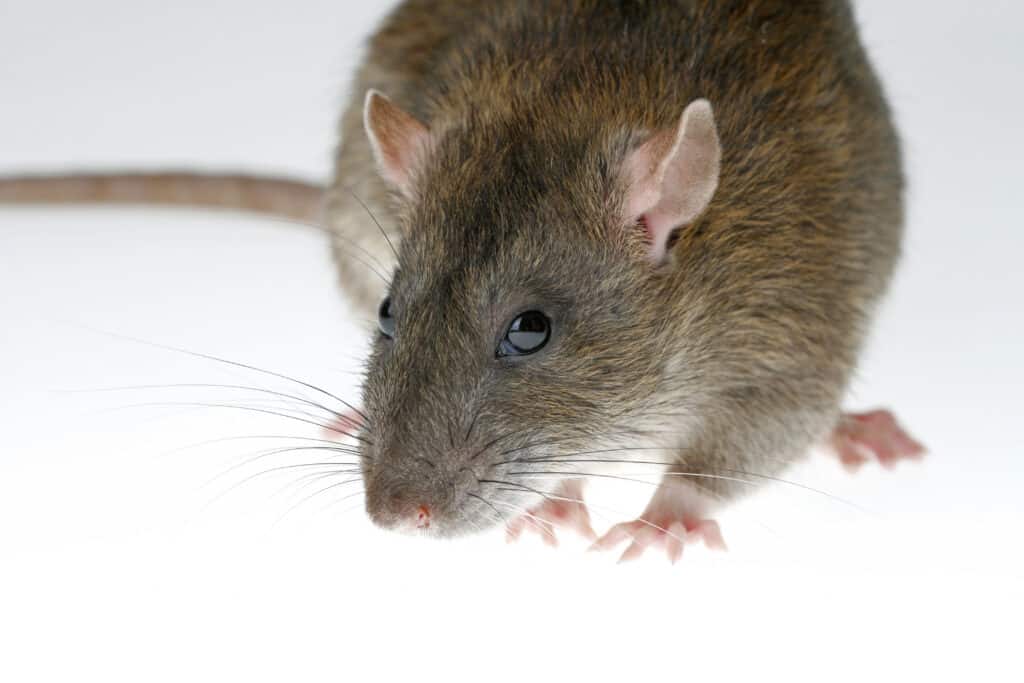
The Norway rat or brown rat is native to China, but due to human travel, they have been able to access ships and populate every continent except Antarctica.
©Holger Kirk/Shutterstock.com
Nearly half of all mammals are rodents, and natural selection has helped many of them avoid predation by fostering short lifespans and prodigious breeding rates. The shortest-living animals in Order Mammalia are giant Sunda rats. This inhabitant of Indonesia, Thailand, and the Philippines can begin breeding after roughly a month, and they’ll give birth to their young only three weeks after mating.
This accelerated birth cycle allows a generation of giant Sunda rats to increase tenfold over just four months. The short life cycle of these rats is especially short, but even the standard brown rat will typically live only two to three years. This is seemingly by genetic design, as studies of the bones and teeth of rats reveal that they seemingly age at a quicker rate than other mammals.
#4: American Copper — The Shortest Lifespan of All Butterflies
Expected Lifespan: two weeks
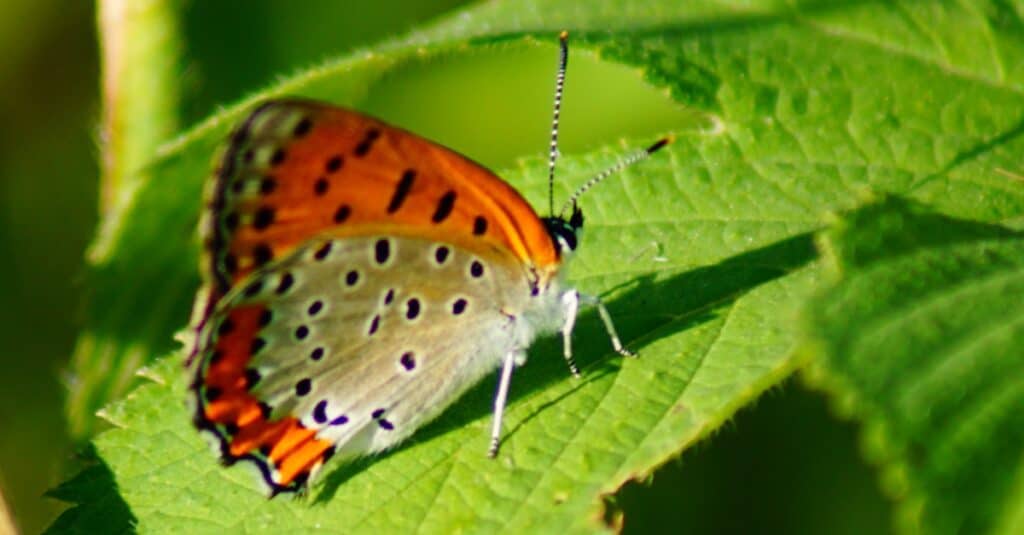
©iStock.com/Brad Cox – BWC Photography
It’s not uncommon for a butterfly to have a lifespan of only a few months or even a few weeks, but the American copper’s lifespan is truncated to an especially short window of about two weeks. Calculate the period from when the egg is first laid through the caterpillar stage and the roughly ten days in the chrysalis, and you’re left with a total life cycle that only spans a month and a half.
However, surviving long enough to enter chrysalis requires a caterpillar to eat a whole lot, and that poses a problem during winter months that no single member of the species lives long enough to make it through. Fortunately, the copper butterfly has developed a way to survive this — eggs that remain dormant until winter thaws and eventually hatch when spring comes.
#3: Labord’s Chameleon — The Shortest-Lived Lizard
Expected Lifespan: four to five months
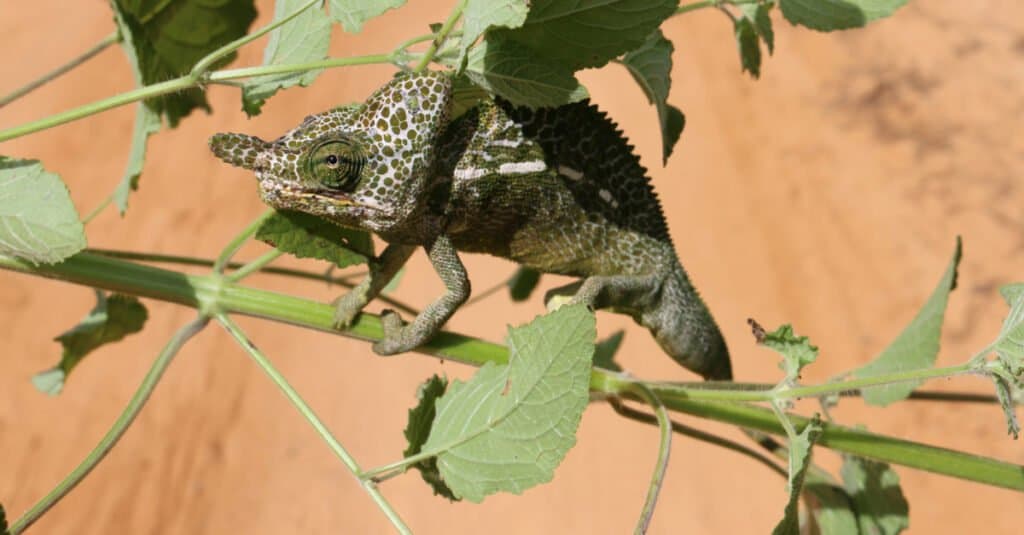
©irinaroma/Shutterstock.com
Another example of a life cycle that has adapted to extreme seasonal conditions is the Labord’s chameleon, which manages to develop in its egg throughout the entirety of Madagascar’s dry season and only emerges during the rainy season. As a result, these chameleons will spend seven to eight months in their egg and only four to five months conscious. It’s a radical approach to survival that allows them to experience the months where prey like insects is plentiful and dodge the months of famine entirely. That also makes them a great case study in the factors that natural selection prioritizes for short-lived species.
The immune systems of the Labord’s chameleon are significantly less developed than creatures with longer lifespans, as these chameleons show incredibly high levels of parasites towards the end of their short lives. Females also develop vibrant coloring patterns rather than males — a reversal of traditional mating trends and perhaps a reminder of how especially urgent breeding is for the survival of the species.
#2: Ruby-Throated Hummingbird — One of the Shortest Lifespans of Any Bird
Expected Lifespan: three to four years
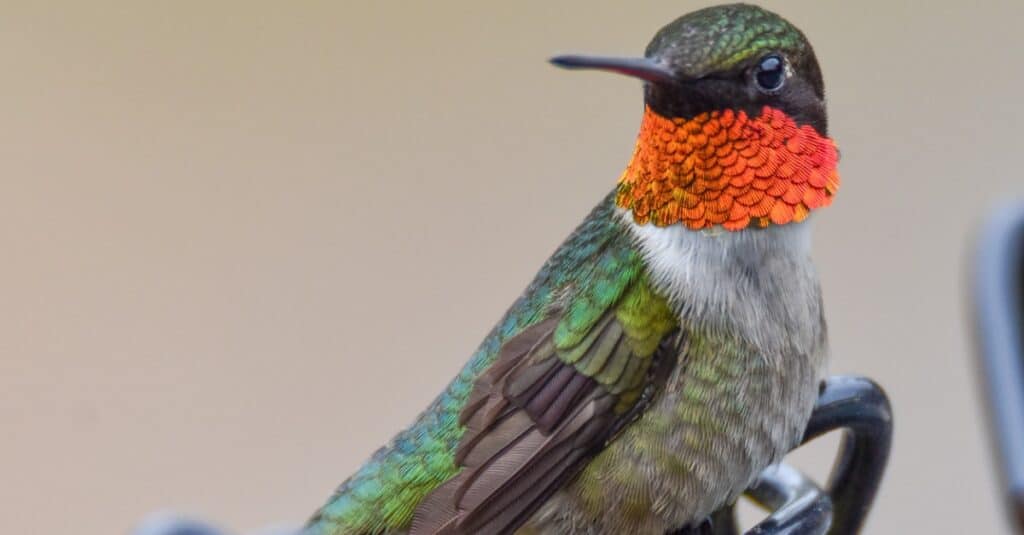
©iStock.com/Jessica Maruszewski
Birds generally have much longer lives than proportionally sized mammals, though larger bird species still possess a tendency to live longer than smaller ones. So it should come as no surprise that the petite ruby-throated hummingbird is the shortest-lived bird on the planet. The oldest member of the species on record lived for six years and 11 months, but three to four years is a more reasonable lifespan for most members of the species. Mortality rates are especially high in the first year, allowing the hardiest and most capable hummingbirds to pass on their genes. Figuring out the actual life cycle of a specific bird species can be difficult thanks to their especially high levels of mobility, and there are likely species with even shorter lives out there.
#1: Mayfly — The Shortest Lifespan of Any Known Animal
Expected Lifespan: 24 hours
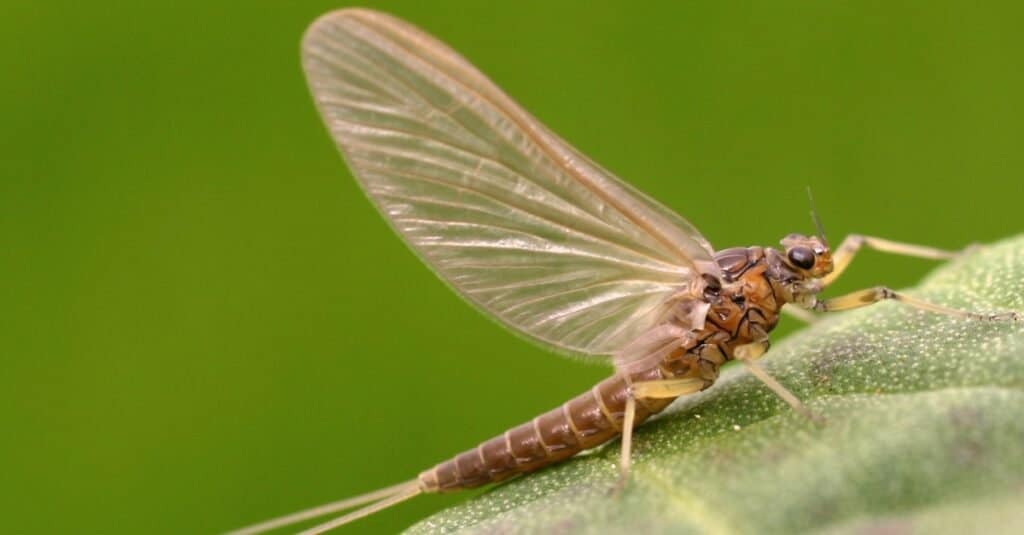
©iStock.com/englishriver
The lifespan of a fly is short no matter what species you’re talking about, but the mayfly puts even the average lifespan of a fly to shame. These insects are the shortest living animals on the planet, as the adult lifespan of a fly from this species is only 24 hours. It’s a phase of life in which mating is the sole priority, and these insects don’t even develop mouths in their final form since they don’t have enough time to prioritize eating. But it’s a tactic that’s worked, as the mayfly is recognized as the oldest flying insect species still alive.
In Contrast: An Animal with the Longest Lifespan
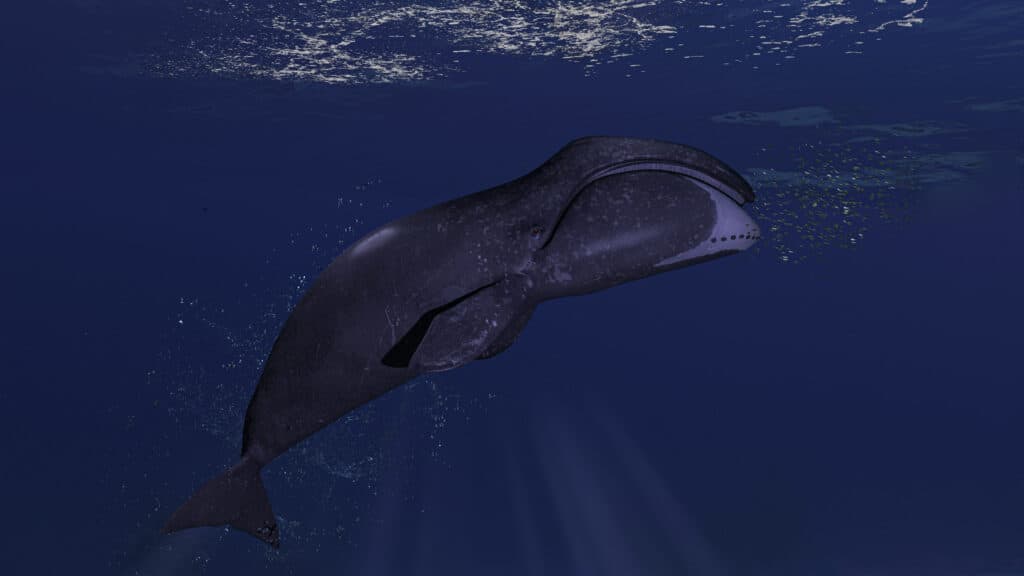
Bowhead whales live for over 200 years and have the most enormous mouth of any whale.
©iStock.com/bbevren
Summary of 8 Shortest Living Animals
| Rank | Animal | Lifespan |
|---|---|---|
| 1 | Mayfly — The Shortest Lifespan of Any Known Animal | 24 hrs |
| 2 | Ruby-Throated Hummingbird — One of the Shortest Lifespans of Any Bird | 3 to 4 years |
| 3 | Labord’s Chameleon — The Shortest-Lived Lizard | 4 to 5 months |
| 4 | American Copper- The Shortest Lifespan of All Butterflies | 2 weeks |
| 5 | The Giant Sunda Rat-The mammal with The shortest Lifespan | 6 months to one year |
| 6 | Sign Eviota-The Shortest Lifespan Of Any Fish | 59 days |
| 7 | Paedophryne Amanuensis — The Frog Species With the Shortest Lifespan | one year |
| 8 | Bernese Mountain Dog- The Shortest Lifespan of All Dog Breeds | 5.7 years |
The photo featured at the top of this post is © Achkin/Shutterstock.com
Thank you for reading! Have some feedback for us? Contact the AZ Animals editorial team.






